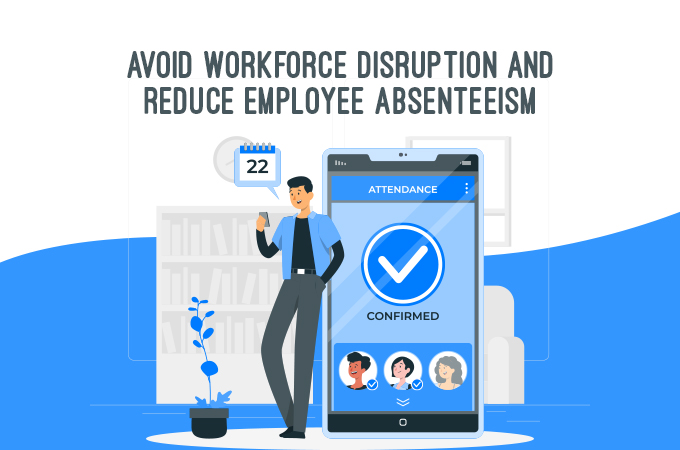Absenteeism in the workplace is a significant problem for most organizations. It leads to productivity loss and can hamper daily ongoing operations by affecting employee morale and leading to increased labour costs. Absenteeism arises when an employee is absent for prolonged periods for no apparent reason. This does not include sudden illness or availing of paid leaves.
To tackle this issue, HR management is encouraged to develop a solid plan to manage employee attendance in their organizations. The HR professionals have a big role in drafting employee absenteeism plans and making them feasible for both employees and the organization. The key to controlling absenteeism in the organization lies in correctly assessing the nature of the problem and finding feasible solutions.
The data can also help in identifying patterns of absenteeism and draw meaningful insights to curb the problem. There is a significant cost associated with absenteeism that is detrimental to the organization.
Here are a few strategies that you can adopt at your organization to manage absenteeism:
- Create a strong employee absence policy
Even if you have a flexible company culture, a formal absence management policy is easier to implement and manage. It should explain the kind of unplanned absences that are acceptable and those that are not.
For drawing this you need to consider:
- Who and when should an employee inform when they take leaves?
- When is a medical certificate necessary?
- When and how will the employee be notified that their absence is becoming an issue?
Be mindful of federal laws while drafting your policy and keep it more like a guideline rather than imposing it like a law.
- Provide flexible schedule and remote working options
Organizations are looking to reduce the absence rate by providing a flexible or remote working option to employees. This provides a better work-life balance and improves employee morale leading to increased productivity and less absence from work.
It reduces the stress on employees, improves retention and leads to increased output. Telecommuting can significantly reduce unplanned absences and those taken for personal reasons.
- Create a space to communicate safely
Absences in the business world will take place no matter what. Opening a safe and two-way communication channel between managers and employees will encourage them to share their problems and will lead to an empathetic work environment.
Make it easier for employees to seek leaves and be honest about their absence. An open and inclusive environment will increase transparency and reduce unplanned leaves and absences in the organization.
- Offer a fair health and well-being program
A company that invests in the physical and mental wellbeing of resources will enjoy a more productive workforce. Healthy workers will be more focused and less likely to be absent.
The organization shouldn’t just indulge in lip service but provide a strong employee wellbeing program that is designed to improve employee health. Work to include family members in the program to maximize its effectiveness.
- Train your managers
Although employee absenteeism falls under the domain of HR management, line managers should be equally cognizant of the issue to take timely measures. However, in many organizations managers are ill-equipped to handle employee leave management.
In such a scenario, HR professionals must step in to provide adequate training to line managers to handle any such situation. They should know how to deal with an employee taking frequent leaves, when to enforce the policy and when to make an exception, and also when to escalate the matter to HR. Once line managers are proactively involved, it becomes much easier to tackle the issue.
- Take proper disciplinary actions
Habitual offenders who despite repeated warnings refuse to improve must be given a stern disciplinary warning to set a proper example. However, for serious employees, the issue can be solved with proper communication and usually, no further escalation is needed.
At the same time, it is important to take action against those who take undue advantage of the leave policy and exploit the system. Inability to address these offences can jeopardize the entire policy and make it difficult for those adhering to the policies.
Without proper absence management, your business will end up in chaos. Lack of a proper mechanism will increase instances of indiscipline and lead to serious productivity loss. Organizations must take active steps to curb absenteeism and address attendance issues in the workplace.
Using the attendance module of Paylite HRMS, you can plan employee shift timings, track the attendance of remote workers and integrate it with the payroll system streamlining your salary calculation process. To know more about how this works, book a free demo of the software https://www.paylitehr.com/request-demo.html.
